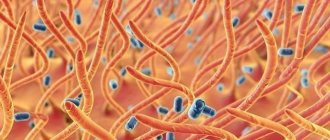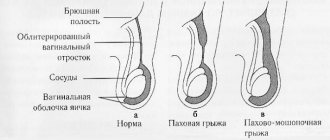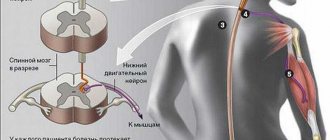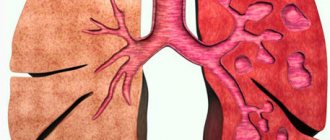What is hemophilia?
Hemophilia is not one disease, but one of a group of inherited bleeding disorders that cause abnormal or excessive bleeding and poor blood clotting. The term is most often used to refer to two specific conditions known as hemophilia A and hemophilia B, which will be the main subjects of this article. Hemophilia A and B differ in a specific gene that mutates and encodes a defective clotting factor (protein) in each disease. Hemophilia C (factor XI deficiency) is rare, but its effect on clotting is much less pronounced than that of A or B.
Hemophilia A and B are inherited in an X-linked recessive genetic pattern and are therefore much more common in men. This type of inheritance means that a given gene on the X chromosome is expressed only when the normal gene is not present. For example, a boy has only one X chromosome, so the defective gene will be on his only X chromosome. Hemophilia is the most common X-linked genetic disorder.
Although much less common, a girl can also have hemophilia, but she must have a defective gene on both of her X chromosomes, or one hemophilia gene plus a lost or defective copy of the second X chromosome, which must carry normal genes. If a girl has one copy of the defective gene on one of her X chromosomes and a normal second X chromosome, she does not have hemophilia, but is said to be heterozygous for hemophilia (i.e., a carrier). Her male children have a 50% chance of inheriting one mutant X gene and thus have a 50% chance of inheriting hemophilia from a carrier mother.
Hemophilia A occurs in approximately 1 in every 5,000 live births of men. Hemophilia A and B occurs in all racial groups. Hemophilia A is about four times more common than B. B occurs in about 1 in 20-30,000 live births in males.
Hemophilia is called the royal disease because Queen Victoria, Queen of England from 1837 to 1901, was a carrier of the disease. Her daughters passed on the mutated gene to members of the royal families of Germany, Spain and Russia. Alexandra, the granddaughter of Queen Victoria who became the Russian Tsarina in the early 20th century when she married Tsar Nicholas II, was a bearer. Their son, Tsarevich Alexei, suffered from hemophilia.
Causes
The direct cause of the development of hemophilia A/B is gene mutations of the X chromosome in the area of the long (q27-q28) arm. About 70-75% of patients have a family history of hemorrhagic syndrome (in relatives), and in 25-30% the inheritance of the disease in the family history is not traced, that is, spontaneous gene mutation occurs on the X chromosome.
It was revealed that the gene that encodes the process of factor VIII synthesis is located in the Xq 28 locus on the long arm of the X chromosome and consists of 25 introns/26 exons. The size of the factor VIII gene is 186 thousand paired DNA bases. Moreover, mutations in this gene can occur in different types: deletions, duplications, inclusions of new bases, reading frame shifts. In most cases, an inversion of the nucleotide sequence is observed, in particular, an inversion in the factor VIII gene of intron 22, which causes a low level of this factor and also causes severe phenotypic manifestations.
The factor IX gene is located on the long arm of the X chromosome at locus Xq 27 and includes 7 introns/8 exons. At the same time, mutations in the factor IX gene occur 7-10 times less frequently than in the factor VIII gene. In severe hemophilia, two types of gene mutations often occur.
What causes hemophilia?
As mentioned above, hemophilia is caused by a genetic mutation. The mutations involve genes that code for proteins needed in the blood clotting process. Bleeding symptoms occur due to a blood clotting disorder.
Pathogenesis
The pathogenesis of hemophilia is based on a deficiency of plasma factors (VIII, IX, XI) of blood coagulation, which causes a disruption of the process of blood coagulation in the internal coagulation unit of hemostasis (formation of thromboplastin) and causes hematoma delayed type of bleeding. The first stage of blood coagulation is the process of thromboplastin formation, which occurs normally only if there is a sufficient concentration of factors VIII and IX. Its duration is 12-15 minutes, and the subsequent process of blood clotting after the appearance of active thromboplastin in the blood occurs almost instantly.
It is the disruption of this plasma phase of hemostasis that causes the type of bleeding characteristic of hemophilia. Bleeding immediately after injury may be absent, since primary (vascular-platelet) hemostasis functions normally, which ensures the formation of a primary thrombus.
Since the primary thrombus is not able to provide a final stop of bleeding, secondary hemostasis suffers - the formation of a fibrin (final) thrombus, the bleeding resumes and occurs suddenly a few hours (the next day) after surgery/trauma. At the same time, despite its duration, there is no increase in the volume of blood loss, which is its feature. The figure below schematically shows the pathogenesis of hemophilia.
Symptoms and signs
The disease can vary in severity, depending on the specific type of mutation (genetic defect). The extent of symptoms depends on the level of clotting factor affected. Severe disease is defined as factor activity <1%, factor activity between 1% and 5% is moderate disease, and factor activity greater than 5% is mild disease. The degree of bleeding depends on the severity (amount of factor activity) and is similar for hemophilia A and B.
In severe hemophilia (A or B), bleeding begins early in life and may occur spontaneously. Patients with mild hemophilia may only bleed in response to injury or a cut.
In severe forms of the disease, bleeding episodes usually begin within the first 2 years of life. Heavy bleeding after circumcision in men is sometimes the first sign of the disease. Signs may develop later in people with moderate or mild illness. Bleeding in hemophilia can occur anywhere in the body. Common sites for bleeding include joints, muscles, and the gastrointestinal tract.
Hemophilia: what kind of disease is it, what do you need to know about it?
HEMOPHILIA: what kind of disease is it?
what do you need to know about it?
The unusual frequency with which this disease occurs among different generations of the same family has long led to the suspicion that hemophilia is a hereditary blood disease. It has been established that women, without being sick themselves, transfer hemophilia from one family to another. A typical example of female bloodborne disease in European history is the family tree of Queen Victoria of England, from whom the disease spread to many other royal houses. The son of the last Russian Tsar suffered from this disease.
However, hemophilia does not only affect aristocratic dynasties. It can occur in any child who has a family member who suffered from this blood disease.
Hemophilia is a congenital hereditary disease. Of course, it is the most famous among genetically determined blood diseases.
Hemophilia is expressed in increased bleeding, be it as a result of external, even the smallest injuries, or internal bleeding in tissues, joint capsules, etc. An injury that causes almost unstoppable bleeding can be extremely minor.
This blood disease has serious consequences for internal organs and joints, causing concomitant diseases and abnormalities.
Causes of hemophilia
Scientists attribute hereditary factors to the main reasons provoking the development of hemophilia disease. Genetically defective blood clotting is inherited from generation to generation, and the carrier of the defective gene is exclusively the female body, and the patient with hemophilia, as a rule, is a man. In fairness, it is worth noting that there are scientifically described cases of hemophilia in women, but these cases are extremely rare and occur when both parents of a sick girl are carriers of the damaged gene. By passing the disease on to her children, the woman “conductor” herself remains healthy, her sons are doomed to hemophilia, and her daughters also become carriers of the hidden gene until they pass it on to their children. Therefore, the only way to interrupt the pathological chain is to take advantage of the rather cruel advice of geneticists and carefully plan the birth of future offspring. In accordance with the recommendations of modern geneticists, carrier women should not have children at all, and only sons should be born in families of hemophiliac men and healthy women; women who are pregnant with girls are offered to undergo an artificial abortion procedure. Currently, scientists have not yet found a way to eliminate the cause of hemophilia; today, unfortunately, this is not yet possible, because it is embedded in the human genetic code. A patient with hemophilia has nothing left to do except learn to live with this disease and get used to the fact that his body every day needs special precautions and especially careful treatment.
Disorders caused by hemophilia
Blood coagulation is a complex biochemical process in which fibrinogen, a protein contained in plasma, changes its structure. This occurs under the influence of various factors, among which the release of tissue thromboplastin is very important. The formation of thromboplastin occurs with the help of numerous substances that are found in small quantities in the blood. One of them, factor VIII, or antihemophilic factor (AHF), is absent or insufficiently present in those affected by hemophilia. The term hemophilia actually refers to two diseases that have the same symptoms but different causes.
There are two types of hemophilia, namely:
Hemophilia A, or classical hemophilia
Hemophilia B, or Christmas disease
Hemophilia C is an extremely rare type that mainly affects Jews
The second type is less common. Type A lacks factor VIII; in hemophilia B, it is factor IX, or plasma, thromboplastin, called Christmas factor. It is also important for blood clotting, and it becomes almost impossible in its absence.
The third type occurs due to a deficiency of factor XI. Due to the non-standard clinical picture, not so long ago this type was isolated separately and is not included in the types of hemophilia.
What is acquired hemophilia?
Hemophilia is inherited. However, cases have been recorded when manifestations of this disease were observed in adults who had not been sick before and did not have patients in their family. Acquired hemophilia is always type A. In half of the cases, doctors were never able to understand the cause of the disease. In other cases, the cause was cancer, taking certain medications, and other reasons that cannot be systematized.
Signs, symptoms, diagnosis and clinical picture of hemophilia
The clinical picture is characterized by an increased tendency of patients to lose blood. Within a few days after birth, bleeding may appear that does not stop, which puts the life of the newborn at risk. But in some cases, hemophilia only appears when the child starts running.
Then parents may observe an increased tendency to bruises, hematomas and bleeding in the skin and mucous membranes after banal microtraumas, such as light shocks, contusions, etc., which indicates this blood disease.
Signs, symptoms of hemophilia
At this age, nosebleeds or bleeding of the oral mucosa (tooth eruption) are also common. In older children, heavy bleeding follows tooth extraction or tonsillectomy. These are the first signs of hemophilia. Bleeding can also occur in internal organs - the liver, spleen, intestines, kidneys and brain, or, as is often the case, in the joints.
In this case, they talk about hemophilic arthropathy or hemarthrosis. As a result of such intra-articular bleeding, especially in the knee, there is a danger of destruction of bones and cartilage and significant limitation of movements of the affected joint, up to their complete absence.
Hemophilia is a disease in which symptoms can occur with varying intensity. The severity of symptoms is proportional to the severity of the genetic defect. If this blood clotting factor is completely absent, the patient is at extreme risk. In severe cases, death occurs in early childhood due to cerebral hemorrhage, too much blood loss after injury, or even because blood accumulates in the neck, leading to suffocation.
As the child grows up, he becomes more and more aware that he is sick and learns to control his activity and, if possible, avoid accidents and injuries. If young patients survive early childhood, they can rightfully hope for a long, active life. It is impossible to foresee more precisely how the disease will develop over time. For example, infections can further increase bleeding tendencies. Sometimes you can observe a clinical course, which is characterized by the presence of several phases.
There is a period when injuries cause only slight loss of blood or even no bleeding at all, then again there comes a time when extensive, practically unprovoked bleeding occurs. Those. hemophilia and its symptoms can appear in waves.
Hemophilia is diagnosed by different specialists - first of all, you need to visit a pediatrician, who can write a referral to a hematologist, neonatologist, geneticist, etc. In case of accompanying complications and pathologies, you need to contact the appropriate specialists. The diagnosis is made after a series of laboratory and genetic tests.
Signs of hemophilia
To clarify the diagnosis, tests may be required: determining the amount of fibrinogen; determination of prothrombin index; determination of thrombin time; definitions of mixed
Couples who are expecting a child and are at risk should consult with specialists and conduct appropriate research from the beginning and throughout pregnancy.
Treatment of hemophilia
Hemophilia cannot be cured; a patient who suffers from this blood disease must fight the symptoms and pathologies caused throughout his life. That is, hemophilia is an incurable disease.
It would be irresponsible not to explain to the parents of a child with hemophilia how dangerous this disease is. However, they should not think that their child is lost. Today, even a patient with hemophilia has the opportunity to lead an almost normal life.
To control the bleeding tendency, replacement therapy is necessary. This means that the missing clotting factor must be replaced by introducing it externally. This can be done by infusion of plasma or whole blood, or by using a concentrate of the factor itself (VIII or IX).
It is extremely important that clotting factor is administered as soon as possible when bleeding occurs. In some countries (USA, Scandinavia), many patients with hemophilia give themselves intravenous injections of plasma concentrate as soon as they notice the slightest bleeding, even before going to the nearest specialized medical center. Since it is difficult to obtain a sufficient amount of factor VIII, recently there has been an active search for methods for its genetic production.
Another possibility is agents that directly stimulate the production of factor VIII in the patient's body.
These therapeutic options ensure the safe performance of minor (tooth extraction, etc.) and major surgical operations in people suffering from hemophilia. Orthopedic treatment is also important, since all kinds of damage to bones or parts of joints are very common. They should be warned.
That is, hemophilia is an incurable disease.
It would be irresponsible not to explain to the parents of a child with hemophilia how dangerous this disease is. However, they should not think that their child is lost. Today, even people with hemophilia have the opportunity to lead an almost normal life.
In addition, proper physical and mental education is necessary so that hemophiliacs do not become rejected groups of people in society because they cannot cope with everyday life.
Patients with hemophilia develop chronic arthropathy due to repeated bleeding in the joint cavity. This represents the most important complication of this hereditary disease. More often it affects one of the knees, sometimes both, and thus can significantly limit the patient’s motor ability. In the future, these symptoms can definitely be improved through the systematic use of plasma concentrate, which will significantly reduce the symptoms of bleeding in the joint.
But even today, many patients with hemophilia suffer from the so-called hemophiliac joint. For some unfortunate patients, the only way to cure their ailment is synovectomy (removal of the synovial membrane of the joint, the pathological change of which as a result of bleeding becomes the main cause of hemophilic arthropathy. Some of the hemophiliacs after such an intervention were able to return to an almost normal life after immobility.
During childhood, wise selection of toys and activities can be extremely important in preventing traumatic episodes. At school age, a patient with hemophilia can, without special exceptions, take part in the normal educational process. He should not be excluded from any of the activities of other children. It is very important that he does not feel inferior while suffering from his illness, so that later he can lead an independent lifestyle. Throughout life, a hemophiliac adapts to his illness. He knows what restrictions it imposes, takes them into account and plans his activities accordingly. Most often, patients with hemophilia have above average intelligence.
Forecast and prevention of hemophilia
Long-term replacement therapy leads to isoimmunization, the formation of antibodies that block the procoagulant activity of the administered factors, and the ineffectiveness of hemostatic therapy in usual doses. In such cases, the patient with hemophilia undergoes plasmapheresis and is prescribed immunosuppressants. Since patients with hemophilia undergo frequent transfusions of blood components, the risk of infection with HIV infection, hepatitis B, C and D, herpes, and cytomegaly cannot be excluded.
Mild hemophilia does not affect life expectancy; in severe hemophilia, the prognosis worsens with massive bleeding caused by operations and injuries.
Prevention involves medical and genetic counseling of married couples with a family history of hemophilia. Children with hemophilia should always have a special passport with them, which indicates the type of disease, blood type and Rh affiliation. They are prescribed a protective regime and injury prevention; clinical observation of a pediatrician, hematologist, pediatric dentist, pediatric orthopedist and other specialists; observation in a specialized hemophilia center.
Every year, World Hemophilia Day is celebrated under a new slogan, which focuses on a particular problem associated with this disease. And although today, thanks to the efforts of doctors and scientists, as well as international organizations to combat hemophilia, this disease is no longer a “death sentence” for the patient, it is still impossible to stop there - this is what World Hemophilia Day reminds humanity.
Head of the clinical and diagnostic laboratory A.M. Radulskaya
Diagnostics
Most patients with hemophilia have a known family history of the condition. However, about one third of cases occur in the absence of a known family history. Most of these cases without a family history occur due to a spontaneous mutation in the affected gene. Other cases may be due to the affected gene passing through a long line of female carriers.
If a family history of hemophilia is unknown, a series of blood tests can determine which part or protein factor in the blood clotting mechanism is defective if a person has abnormal bleeding.
The platelet count (blood particles needed for the clotting process) and bleeding time should be measured, as well as two indicators of blood clotting: prothrombin time (PTT) and activated partial thromboplastin time (APTT). Hemophilia A and B types are characterized by normal platelet counts and PTT and prolonged aPTT. Special clotting factor tests can then be done to measure levels of factor VII or factor IX and confirm the diagnosis.
Genetic testing to identify and characterize the specific mutations responsible for hemophilia is also available in specialized laboratories.
List of sources
- Protocol for the management of patients with Hemophilia. Problems of standardization in healthcare 2006, p. 18-74.
- Guide to hematology: in 3 volumes. T.3 / Edited by A.I. Vorobyov. 3rd ed. M., 2005.
- Rumyantsev A.G., Rumyantsev S.A., Chernov V.M. Hemophilia in the practice of doctors of various specialties. 2013. 136 p.
- Tretyakova O.S. Hemophilia in children: etiopathogenesis, clinical manifestations, diagnostic approaches //Children's medicine. 2012, 3-4 (16-17) p. 26-35.
- Zozulya N.I., Kumskova M.A., Polyanskaya T.Yu., Svirin P.V. // Clinical guidelines for the diagnosis and treatment of hemophilia. 2021. 34 p.
Treatment
The mainstay of treatment is replacement of clotting factors. Clotting factor concentrates can be purified from human donated blood or made in a laboratory using methods that do not use donated blood. This type of therapy is known as replacement therapy. Clotting factor replacement therapy is carried out by injecting clotting factor concentrates into a vein, similar to a blood transfusion. This type of therapy can be done at home with proper instruction and training.
Depending on the severity of the condition, replacement therapy for insufficient clotting factor may be given as needed (called on-demand therapy) or regularly to prevent bleeding episodes (called prophylactic therapy).
Consequences and complications
Complications of hemophilia are:
- Hemorrhages in important organs.
- Posthemorrhagic anemia.
- Hemophilic arthropathy ( synovitis , joint deformity). Chronic synovitis appears after several hemorrhages in the joints and is most often associated with the lack of replacement treatment or its insufficient effectiveness. Synovitis is manifested by a local increase in temperature, an increase in joint volume, pain and limited mobility.
- Contractures. osteoarthritis develops with deformation and inflammatory changes in the joints, which ultimately leads to ankylosis and contractures . Deformation and contractures cause disability.
- Fractures. They occur against the background of osteoporosis and arthropathy .
- The emergence of inhibitory antibodies to factors.
- Possibility of transmission of infections (viral, including HIV, prion, parvovirus). When using recombinant factors, this risk is absent.
- Development of pseudotumors. They are formed by hemorrhages in the muscles located with the bone, usually in the muscles if treated incorrectly. They manifest themselves as a tumor-like formation that exists for many months and years and which has no tendency to reverse development, despite the ongoing replacement therapy. The pseudotumor enlarges and compresses surrounding tissues. Without treatment, it reaches very large sizes, creating pressure on nerves and blood vessels, and also causing fractures.
- Complete removal of the tumor and capsule is recommended.
- Nephritis and kidney failure .
- Rheumatoid syndrome as an immune complication.
Complications
Blood-borne infections such as the HIV virus and hepatitis B and C were a major complication of hemophilia treatment during the 1980s. These infections were transmitted through factor concentrates and other drugs used to treat hemophilia. The use of large pools of blood donors to prepare production factor concentrates and the lack of specific testing for infectious agents have contributed to the contamination of blood products used to treat hemophilia.
By 1985, about 90% of people with severe hemophilia were infected with the HIV virus, and about half of all people with hemophilia were HIV positive. Today, improved screening and production techniques, including viral removal techniques, as well as the development of recombinant factors, have essentially eliminated this tragic complication of treatment.
Prevention
Primary prevention of hemophilia involves genetic testing of a married couple whose relatives have cases of hemophilia. Genetic counseling determines the risks of inheriting a gene. If this moment is missed, then a prenatal molecular genetic study is possible, which is carried out at 10-12 weeks (chorionic villus puncture is performed for the study) or from the 15th week (amniotic fluid is taken). If it was not possible to obtain DNA markers, then at week 20 the fetus is taken to determine the level of factor VIII. For early diagnosis, blood is taken from the umbilical cord after the baby is born.
Dispensary observation and treatment of patients
- Carrying out preventive treatment with factor concentrates and “bypass” drugs.
- An examination in specialized hemophilia centers, which evaluates the effectiveness of treatment, drug intolerance, and the presence of an inhibitor to blood clotting factors.
- Treatment of concomitant diseases - teeth, gastrointestinal tract, ENT.
- Treatment of complications of hemophilia ( anemia , factor inhibitors).
- Dentist examinations 2 times a year. During manipulations, the patient must have factor concentrates, Desmopressin or Tranexam .
- Maintaining oral hygiene. Patients should use a soft toothbrush to brush their teeth.
- Patients should avoid intramuscular injections and not use acetylsalicylic acid and other drugs that affect platelet coagulation and function.
- Daily non-strength physical exercises that develop and strengthen muscles are important; swimming and therapeutic walking are useful. At the same time, it is necessary to avoid exercise on weight machines and sports associated with the risk of injury.
Forecast
Before the development of factor concentrates, patients with hemophilia had a significantly reduced life expectancy. Life expectancy until the 1960s for people with severe hemophilia was limited to 11 years. Currently, the mortality rate among men with hemophilia is twice that of healthy men. As mentioned earlier, the rise in treatment-associated HIV and hepatitis infections during the 1980s led to a corresponding increase in mortality rates.
Currently, prompt and appropriate treatment can significantly reduce the risk of life-threatening bleeding episodes and the severity of long-term joint damage, but joint deterioration remains a chronic complication of the disease.
Signs of hemophilia
The main symptoms and signs of hemophilia include:
- constant persistent bleeding that begins an hour or two after a cut, tooth extraction or some other injury. There are also bleedings that are not associated with mechanical damage (spontaneous);
- extensive hematomas even after minor injuries;
- frequent bleeding from the nose and gums (brushing your teeth turns into a bloody spectacle);
- A serious consequence of hemophilia is intra-articular bleeding: blood entering the joint is accompanied by unbearable pain, swelling and impaired joint mobility. Any subsequent intra-articular bleeding can deform it and cause irreversible impairment of mobility;
- blood in “consumable” substances - urine and feces;
Hemorrhage in the brain and spinal cord, the likelihood of which in hemophilia is much higher than normal, can cause death.











